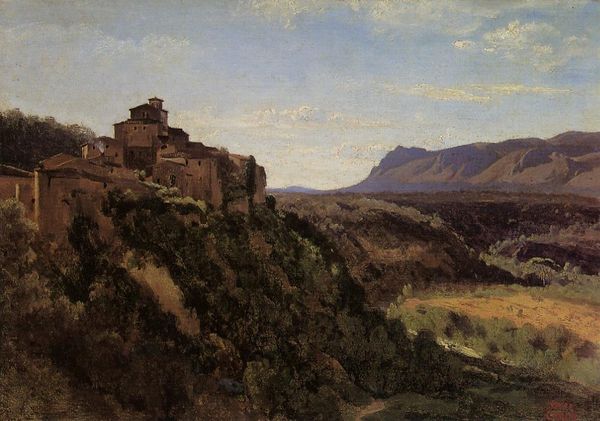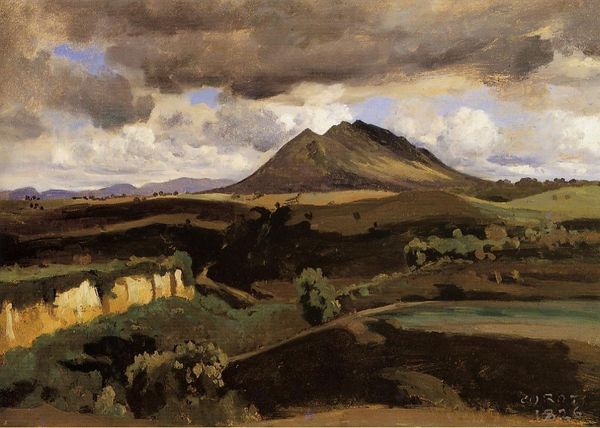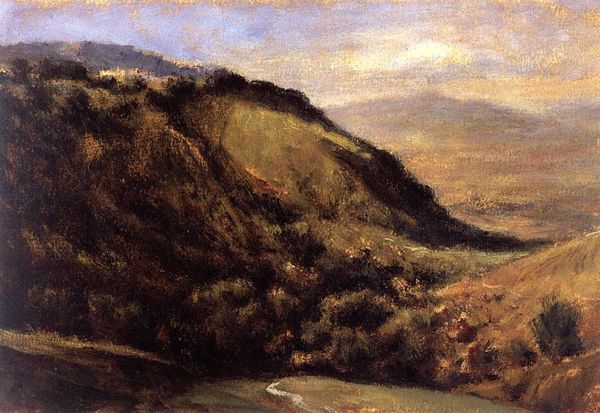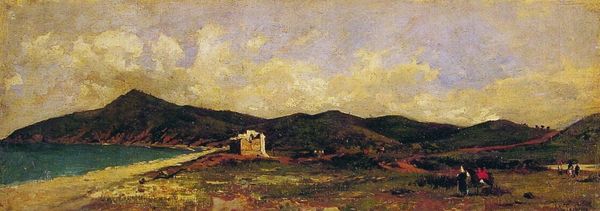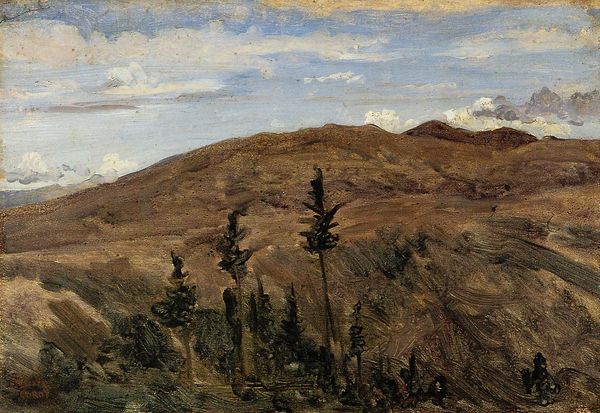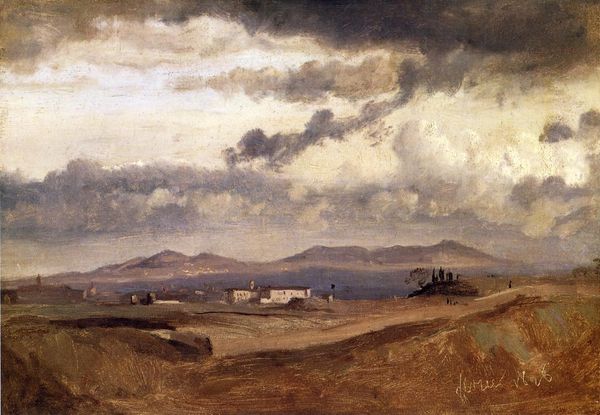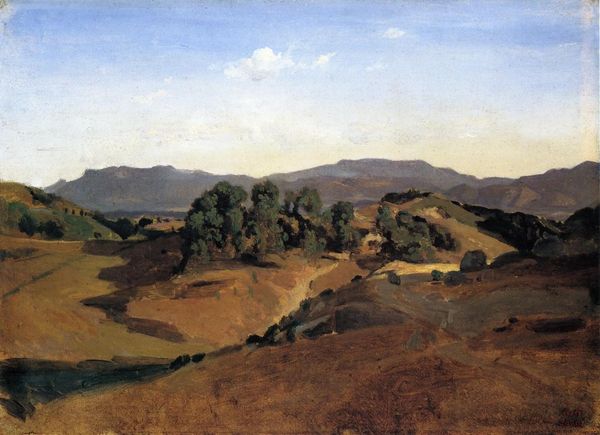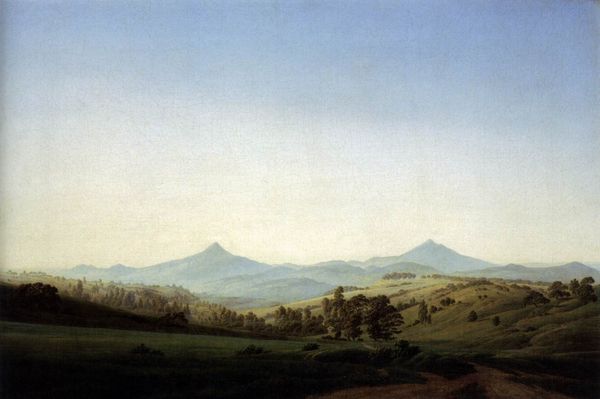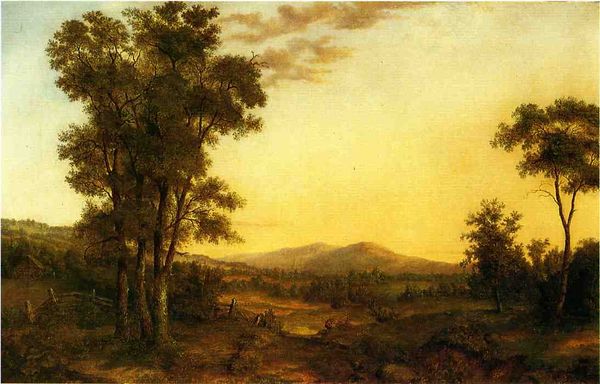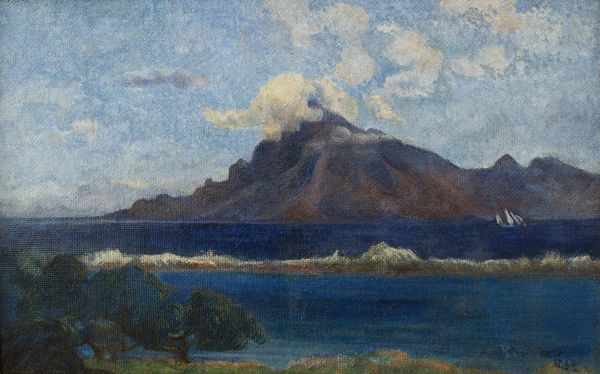
Roman Countryside Rocky Valley with a Herd of Pigs 1828
0:00
0:00
jeanbaptistecamillecorot
Musée d'Art et d'Histoire, Geneva, Switzerland
plein-air, oil-paint
#
plein-air
#
oil-paint
#
landscape
#
oil painting
#
romanticism
#
cityscape
Dimensions: 96 x 135 cm
Copyright: Public domain
Curator: Here we have Camille Corot's "Roman Countryside Rocky Valley with a Herd of Pigs," created circa 1828, painted in oil during his time working plein-air. Editor: What strikes me immediately is how this subdued color palette renders a rather quiet, perhaps even melancholic view. The heavy trees framing what I assume is a village, all under the looming presence of a mountain. It feels… isolated. Curator: Absolutely. Note how Corot organizes and arranges the natural scene. Those “heavy trees”, as you called them, lead to that distant edifice. He sets the buildings into contrast to the natural world. Even those touches of pigs within the foreground—tiny dots within a vast panorama—adds to that sentiment. The overall image invites the observer to contemplate humanity's relationship with nature, right? Editor: The placement of those “tiny dots”, however, begs the question: who sees that “relationship” and on what terms? Corot, by painting this Roman countryside, does so under the sway of larger colonial narratives, in which rural life becomes both the setting for personal and artistic rejuvenation, and simultaneously a signifier for those aspects of social life to be displaced and left behind in the march towards civilization and modernity. Curator: Fascinating, although, could we also explore other perspectives? Note, for instance, how he’s using these visual forms of trees, mountains, buildings, and domesticated pigs as metaphors to represent cultural continuity? Consider Rome’s artistic legacy and rural, historical roots; even its religious past embodied in a landscape painting—a mirror of his internal reflections as an artist, engaging with art history through direct interaction with nature. Editor: Fair point, and those visual icons work to produce Corot's intended narrative: harmony. However, by the time Corot had painted this image, that dream was fast disappearing. It is in fact precisely because Corot represents an endangered vision that the painting speaks to us today with such direct emotional affect. Curator: So while these layers of symbol, history, and intention converge to offer what might seem a romanticized and even idyllic view of Roman life, it's in truth so much more complex, a picture layered by various emotional, historical, and artistic experiences. Editor: Precisely. It is these very ambiguities that turn an otherwise scenic representation of pastoral life into an absorbing narrative.
Comments
No comments
Be the first to comment and join the conversation on the ultimate creative platform.

